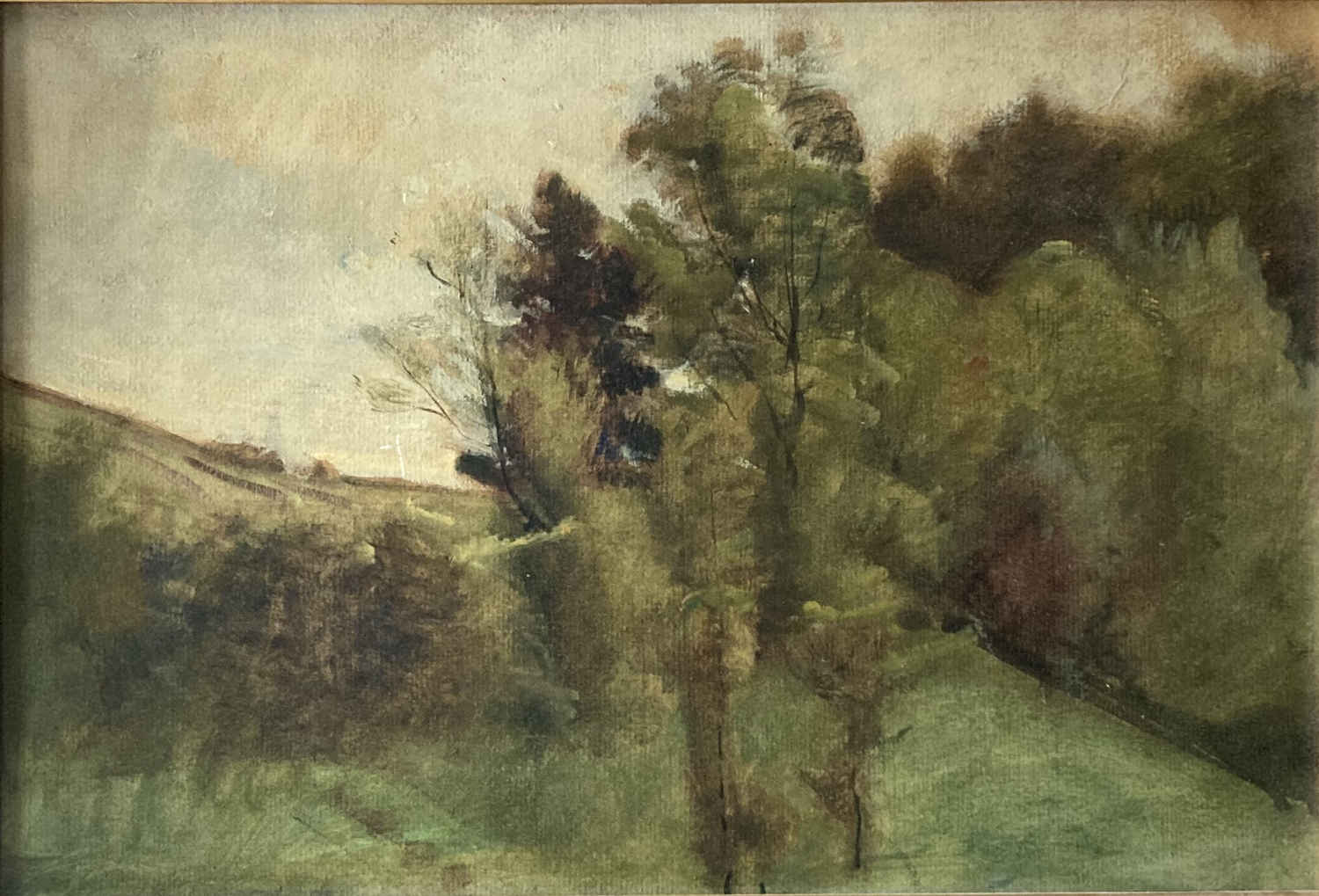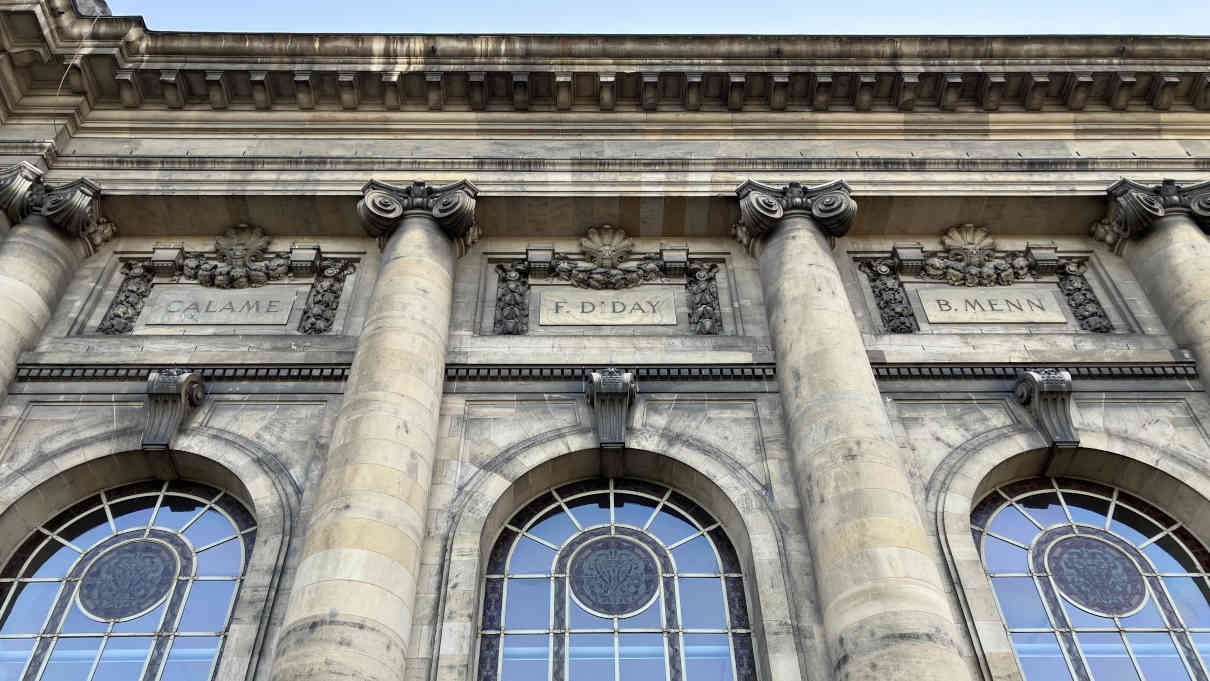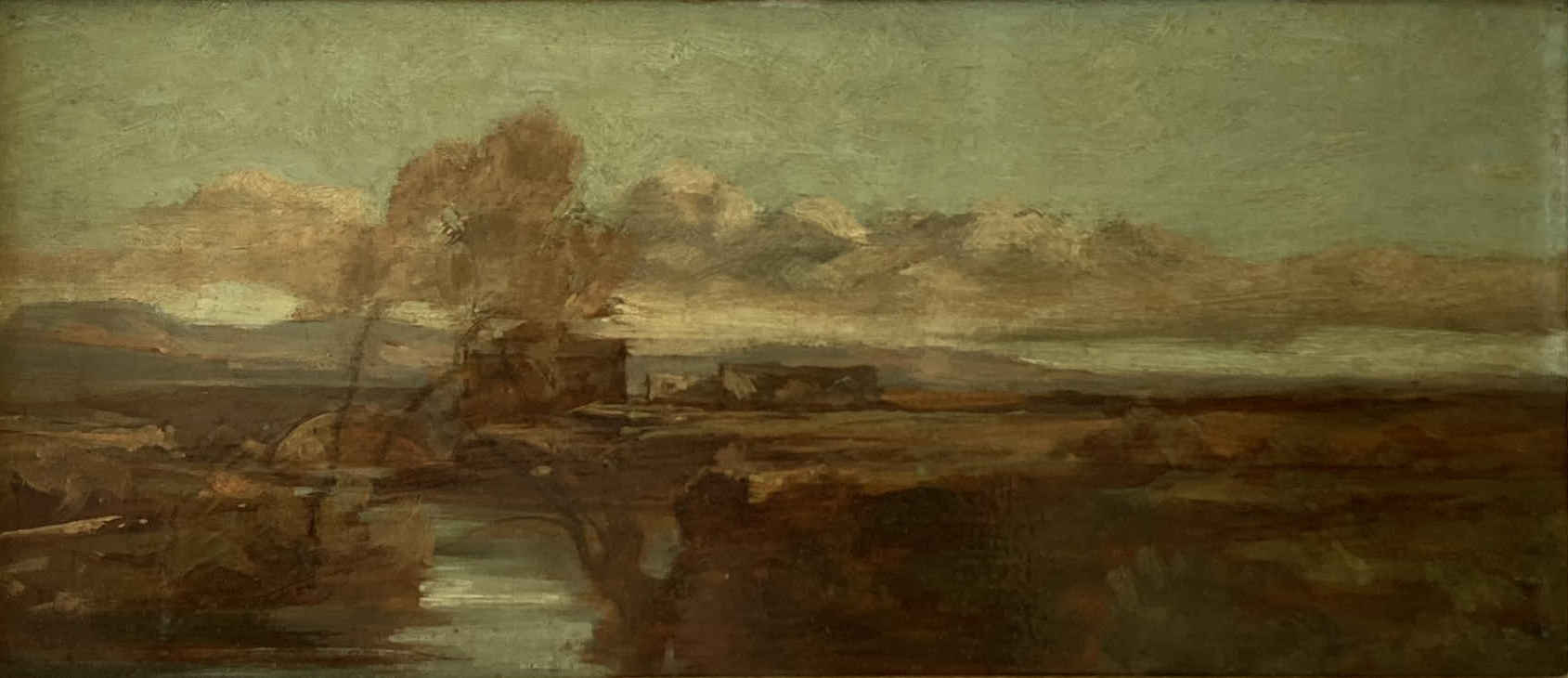Barthélemy MENN
The Swiss landscape painter Barthélemy Menn is one of the main representatives of the Geneva School, the most important exponent of plein airism (open-air painting) in Switzerland [9] and one of the most important representatives of the “Paysage intime”, a style of plain and simple landscape paintings that is considered a predecessor of Impressionism.
In art history, Barthélemy Menn also has a decisive role to play for another reason, as he discovered, promoted and taught probably the most important Swiss painter of modern times, namely Ferdinand Hodler, who once said of his teacher:
“Menn!I owe everything to him!” [4] For it was Menn who admitted the still young and destitute Hodler to the painting school free of charge. [5] The painters Auguste Baud-Bovy and Edouard Vallet were also among Menn’s students. One of Menn’s aims in teaching was to promote the development of the artists’ personalities [8], whereby he took account of individual dispositions and sharpened artistic awareness in relation to modernism. [12]
Barthélemy Menn burnt some of his own paintings, especially those painted in the studio, between 1880 and 1890. [9]

Short biography
Style of Barthélemy Menn
Pleinairism (open-air painting)
Collections with B. Menns
Exhibitions of B. Menn
Sources
Works by Barthélemy Menn
Short biography of Barthélemy Menn
|
1815 1825 1827 – pupil of the drawing school of the “Société des Arts” at Calabri House 1831 1833 – follows Jean-Auguste-Dominique Ingres to Rome, where the latter became director of the Académie de France 1838 – frequent visits to George Sand’s salon, where he had contact with Frédéric Chopin and Eugène Delacroix, who bought paintings from him |
1842 1843 1850 – teaches for around three decades; between 1872 and 1878, Menn taught Ferdinand Hodler, for example 1855-1861 1880-1890 1893 |
Style of Barthélemy Menn
The art historian Fritz Schmalenbach once described Barthélemy Menn’s style impressively and aptly when he explained the inconspicuousness of Menn’s paintings by saying that this did not stem from modesty, but from a disregard for appearance. As long as the mechanism was good, the pictures could have looked however they liked, says Schmalenbach [6].
“It is a painting that is strictly concerned with authenticity and therefore unconcerned, self-assured, almost proud. It has a visible contempt for cheap emotions and theatricality, for gimmicky virtuosity, vanity and loud behaviour, but also for comfortable routine and inwardly dead mannerisms. The same pictures that resemble crystals and clear water when you look into them are devoid of any lustre on the outside, grey, dull and dull, sometimes even unfresh. They were the opposite of exhibition hits. The formats are inconspicuous and often small. They lack the most modest motivic brilliance. Although Menn’s motifs are extremely “selective”, they appear to be the most unusual. A slope of grey and brownish green, a gloomy sky. And it also takes a closer look to realise how colourful such achromatic objects are. The fact that it is not immediately apparent may have something to do with the fact that Menn’s work also lacks any brilliance.” [6]
Menn is regarded as an artist who was not understood by his contemporaries. He later differed from the great painters of his time, such as Alexandre Calame (* 1810, † 1864) and François Diday (* 1802, † 1877), in his choice of motifs, in that Menn did not devote himself to painting Alpine landscapes, but favoured meadow and tree landscapes. This choice of motif alone means that his paintings do not appear grand and sublime. Together with his particular style, Menn’s paintings are characterised by atmosphere and intimacy, very much in the tradition of the poetic Paysage intime.[7] The Alpine painting of Alexandre Calame, on the other hand, has something heroic [12] and imposing about it. This “heroically coloured Alpine painting” and the small masterly vedutas of idyllic mountain landscapes produced primarily for tourists set the tone in Menn’s time, which is why the public avoided Menn’s poetic paintings in the style of the Paysage intime, thus denying him the necessary recognition. [12]
In the meantime, Menn had also tried his hand at Alpine painting when he painted “Das Wetterhorn, vom Hasliberg aus gesehen” in 1845. This painting is considered to be the first modern Swiss landscape painting due to its handling of light and the contrasts in the composition of the mountain relief. [12]
Representative of pleinairism (open-air painting)
Barthélemy Menn is the most important representative of plein air painting in Switzerland. Menn sought contact with Jean-Baptiste Camille Corot, a painter of the Barbizon school (France) and “master of the poetic paysage intime” [7] as well as master of plein airism [10]. Menn once said of Corot’s landscape painting: “[…] it is the balance between earth and sky that makes his landscape so perfect […] Corot’s colour tones are right even where they apply to the simplest and are in no way designed for effect. There is nothing mannered about him at all.” [11]
Collections with B. Menns
Works by Barthélemy Menn (B. Menn) can be found in the following collections in particular:
- Musée d’art et d’histoire de la Ville de Genève, Geneva (around 3000 works [13], including drawings, watercolours, paintings and oil studies)
- Kunst Museum Winterthur / Reinhart am Stadtgarten (formerly: Museum Oskar Reinhart am Stadtgarten), Winterthur
- Aargauer Kunsthaus, Aarau
- Victoria and Albert Museum, London

Photo: Robert Züblin
Exhibitions of B. Menn
In the past, the following exhibitions of works by Barthélemy Menn (B. Menn) took place:
Sources
[1] Entry “Barthélemy Menn” on Wikipedia (last accessed: 20/01/2024)
[2] Barthélemy Menn in the SIKART encyclopaedia (last accessed: 20 January 2024)
[3] “Gruyères Castle” entry in Wikipedia (last accessed: 20 January 2024)
[4] Jura Brüschweiler: Barthélemy Menn 1815-1893. Etude critique et biographique, Zürich 1960, p. 56.
[5] Walter Steffen: You must have seen the heavens, 18 May 2018, on dasgoetheanum.com (last accessed: 20.01.2024)
[6] Schmalenbach, Fritz: Barthélemy Menn, Zu seinem 50. Todestag (20. Mai 1815-11. Oktober 1893), Versuch einer Charakterisierung seines Stils, in: Das Werk : Architektur und Kunst = L’oeuvre : architecture et art, September issue 1943, pp. 302, 304.
[7] Loccatelli, Valentina: Barthélemy Menn (1815 – 1893), in: Annual Report 2016 Kunstmuseum Bern, p. 22.
[8] Aargauer Kunsthaus Sammlung Online: Barthélemy Men, Der Heilige Philippus tauft den Schatzmeister der Königin von Aethiopien, 1815 – 1893 (last accessed: 20.01.2024)
[9] Lukas Gloor und Peter Wegmann (ed.): Im Licht der Romandie. Oskar Reinhart als Sammler von Westschweizer Kunst, Ostfildern-Ruit 2001, p. 181.
[10] Lukas Gloor und Peter Wegmann (ed.): Im Licht der Romandie. Oskar Reinhart als Sammler von Westschweizer Kunst, Ostfildern-Ruit 2001, p. 182.
[11] Lukas Gloor und Peter Wegmann (ed.): Im Licht der Romandie. Oskar Reinhart als Sammler von Westschweizer Kunst, Ostfildern-Ruit 2001, p. 183.
[12] Lukas Gloor und Peter Wegmann (ed.): Im Licht der Romandie. Oskar Reinhart als Sammler von Westschweizer Kunst, Ostfildern-Ruit 2001, p. 188.
[13] Therese Bätschman: Les recherches picturales de Barthélemy Menn, 1. März 2018, on the Website of the Musée d’art et d’histoire de la Ville de Genève (last accessed: 26.2.2024).
Works by Barthélemy Menn
Below you will find works by Barthélemy Menn:
Paysage – Oil painting
7400,00 €
incl. Shipping
Delivery time: 7-14 days
▬
River landscape – Oil painting
4500,00 €
incl. Shipping
Delivery time: 7-14 days




